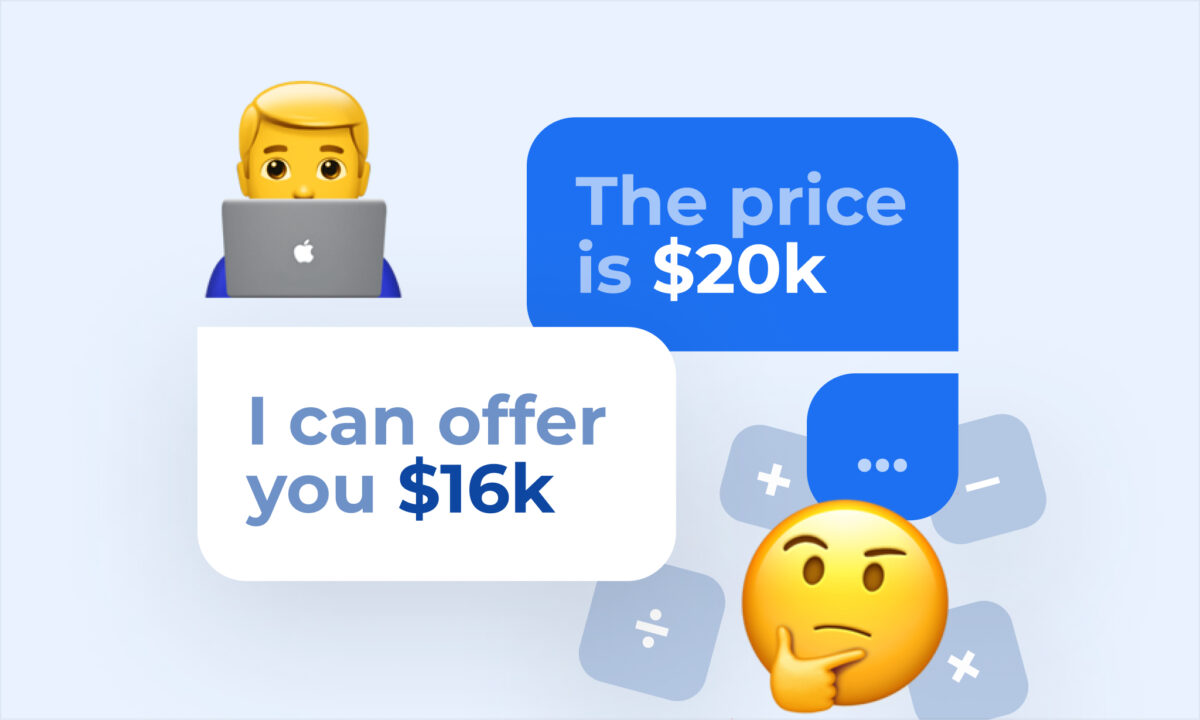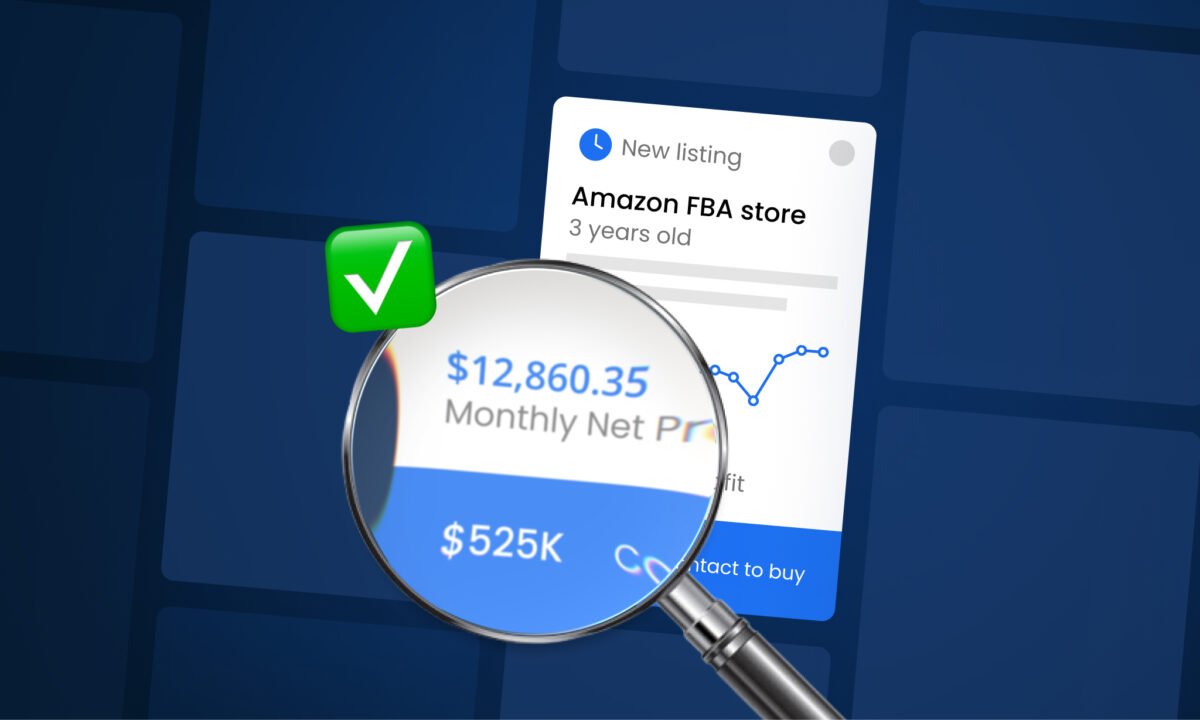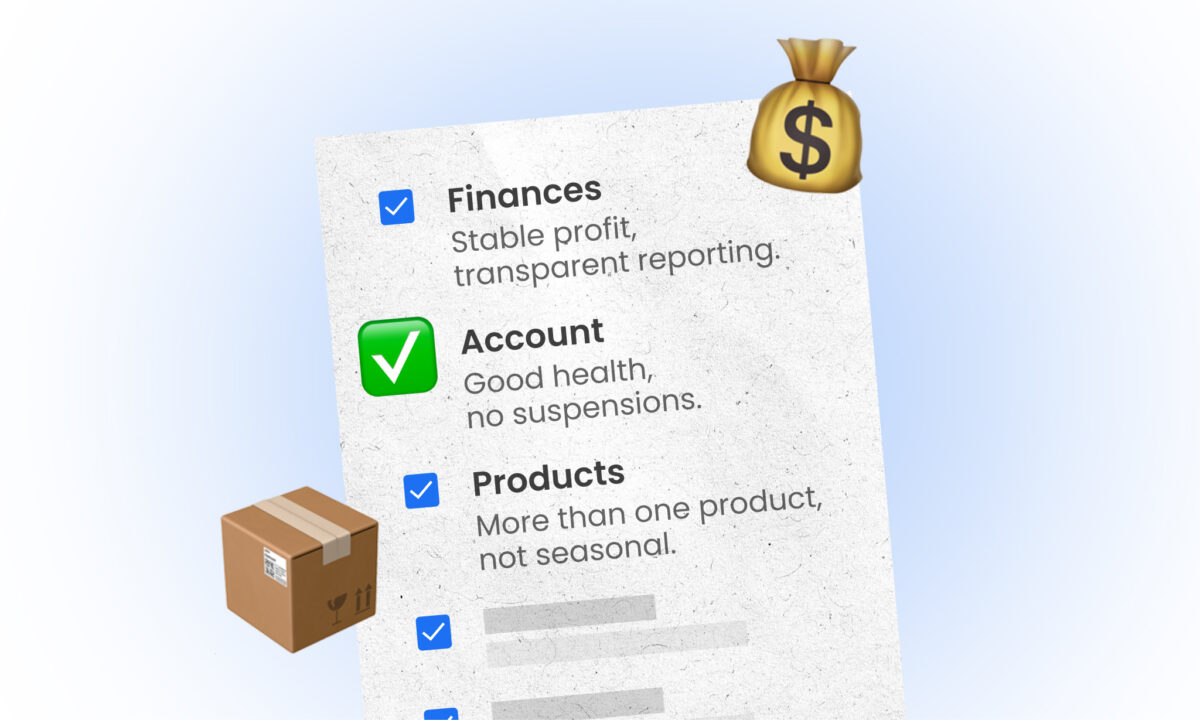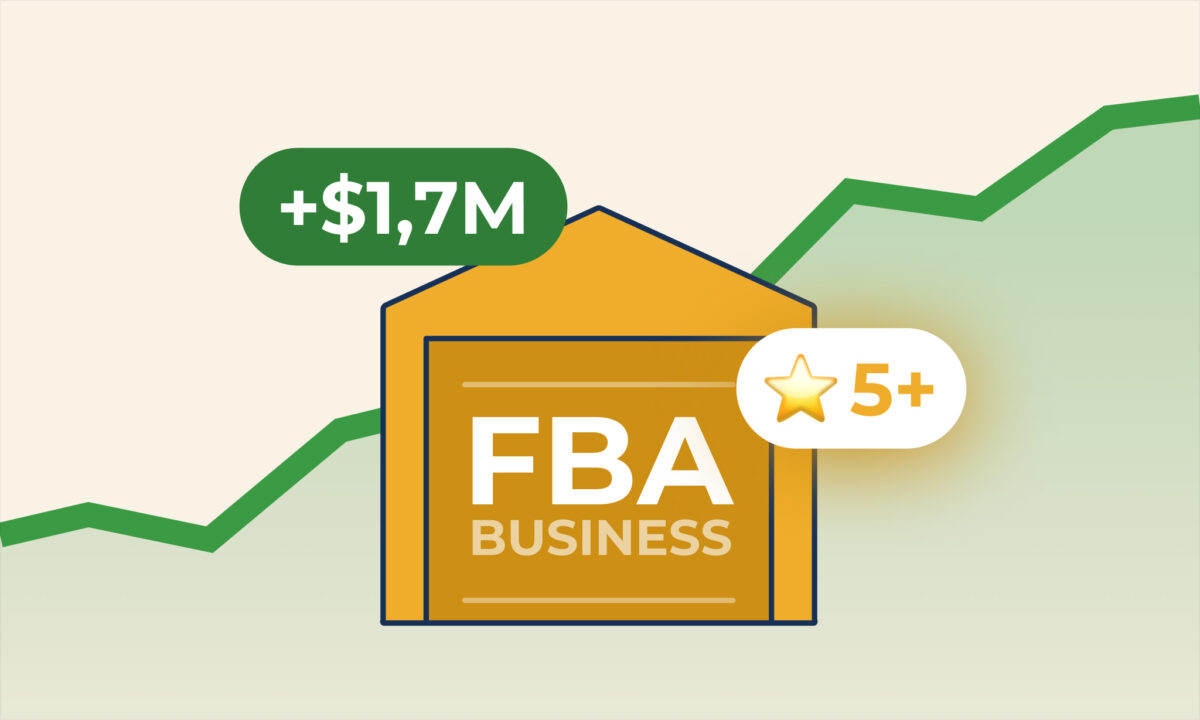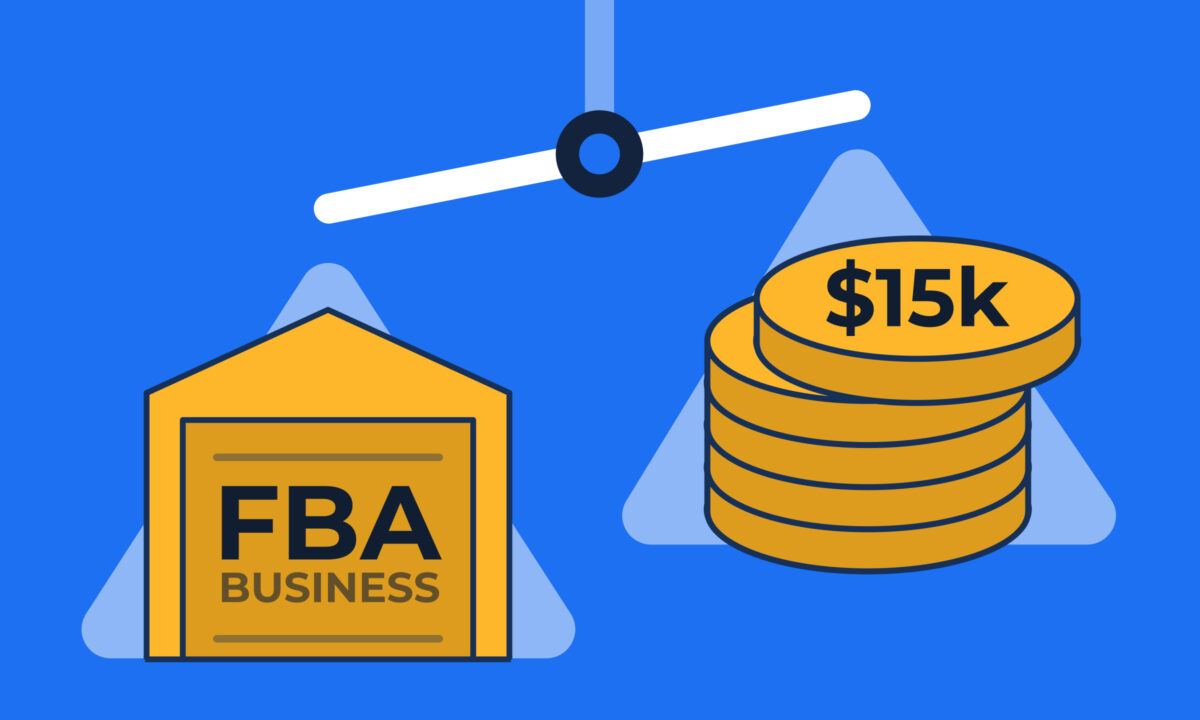Buying an established Amazon FBA (Fulfillment by Amazon) business can be an exciting opportunity, especially for first-time buyers. But it’s crucial to approach a purchase like this with caution. Not every Amazon business for sale is as healthy as it appears on the surface. Before you invest, be aware of potential red flags – warning signs that there may be hidden risks or problems. Below, we explore key red flag categories to watch out for when evaluating an Amazon FBA business. Being informed about these areas will help you spot pitfalls and make a more confident, informed decision.
Inconsistent or Unclear Financials
One of the first things to examine is the business’s financial performance. Inconsistent or unclear financials are a major red flag. As a buyer, scrutinize the seller’s revenue, profit margins, and expenses closely. All the numbers provided should add up and align with actual Amazon reports and bank statements. A trustworthy seller will readily provide essential documents like Amazon Seller Central sales reports, income statements, and expense records. If the seller is hesitant to share data or the figures seem fuzzy, take caution. Verify all costs and fees (FBA fees, referral fees, advertising spend, etc.) to ensure the seller isn’t hiding anything – for example, Amazon FBA fees can be significant, so they must be accounted for accurately. Unexplained gaps, sudden spikes or drops in revenue, or inconsistencies between different reports are clear warning signs of potential financial misrepresentation or poor record-keeping. In short, lack of transparency in the financials is a red flag that should give any buyer pause.
Overreliance on One Product or Traffic Source
Diversification is a sign of a robust business. Be wary if an Amazon FBA business is overreliant on a single product or one primary source of traffic for its sales. When a business has just one “hero” product making up the bulk of its revenue, it becomes vulnerable. Market demand can change quickly, or a competitor could emerge – if that one product’s sales falter, the entire business could nosedive. Industry experts note that if one product accounts for an overwhelming share of revenue (for instance, 90% of sales), the business is effectively a single-product company and poses a higher risk. A broad product range is much healthier; having several successful products means the company isn’t dependent on any single item. That way, if one listing faces an issue or loses Amazon search ranking, other products can still drive revenue.
The same logic applies to traffic sources. An Amazon business typically relies on Amazon’s marketplace traffic, but within that, consider how it gets sales – is it mostly through one keyword ranking or one advertising campaign? Overreliance on a single channel or marketing method (for example, only Amazon PPC ads or a single social media funnel) can be risky. The best FBA businesses have diversified traffic streams or a mix of organic and paid traffic. As one guide notes, it’s wise for FBA sellers to have other customer acquisition assets (like a website or email list) to reduce heavy reliance on Amazon’s platform alone. If the business you’re evaluating has all its eggs in one basket – one product or one traffic source – recognize this concentration as a red flag. It doesn’t mean the business is unviable, but it does mean there’s higher risk if that one element gets disrupted.
Poor Account Health or History of Suspensions
Amazon maintains strict performance standards for sellers. A business with poor account health or a history of suspensions is a major red flag. You’ll want to ensure the Amazon Seller Central account you might acquire is in good standing. Check for any performance or policy violations on the account – for instance, high Order Defect Rate (ODR), late shipment rates, or intellectual property violations. A healthy Amazon seller account should have no recent warnings or penalties. If the account has ever been suspended, even temporarily, that’s something to investigate deeply. Past suspensions or multiple policy strikes could indicate recurring issues (like product quality problems or rule violations) that might resurface. Amazon is known to shut down accounts that break rules, and getting reinstated can be difficult. According to due diligence experts, any account suspension or serious policy violation in the past is a significant red flag that demands caution. Similarly, an Amazon business with an “at risk” account health (e.g. recent metrics below Amazon’s targets or unresolved complaints) could be one step away from suspension. As a buyer, you should verify the account’s health metrics and ensure the seller isn’t currently on thin ice with Amazon. In short, a clean bill of health is critical – if the account’s health dashboard is full of warnings, consider it a big warning sign for your investment.
Weak Branding or No Trademark
A strong brand is a valuable asset for any Amazon FBA business. Weak branding or the lack of a trademark should set off alarms during your evaluation. On Amazon, having a registered trademark allows the business to enroll in Brand Registry, which in turn provides access to enhanced marketing tools (like A+ Content, Brand Stores, and Sponsored Brand ads) and better protection against listing hijackers. If the business has no registered trademark, it means it likely isn’t in Brand Registry – a red flag that the seller hasn’t invested in protecting or building the brand. Without a trademark, the brand name could even be at risk of infringement (someone else could register it), or the business might be limited in how it can fight copycats.
Also consider the overall branding: is the business selling generic, unbranded products with no real identity or loyal customer base? A business that anyone could replicate easily (for example, a generic product from a factory with a made-up name slapped on it) has little defensibility. If anyone could invest a small amount and start selling an identical product, that’s a serious red flag for the business’s long-term sustainability. Buyers prefer FBA brands that have unique logos, packaging, and a presence that stands out on Amazon. Conversely, a seller who hasn’t bothered to trademark their brand or develop any brand presence might be signaling that the business doesn’t have much in the way of intellectual property or differentiation. Always verify that the business has secured the necessary IP rights and trademarks for its products. If it hasn’t, or if the brand is extremely weak, proceed with caution. At best, lack of trademark is an opportunity you’d have to tackle after acquisition; at worst, it could spell legal troubles or an easily eroded market position.
Unstable Supply Chain or Lack of Supplier Contracts
For a physical products business, the supply chain is its lifeline. An unstable supply chain or absence of solid supplier contracts is a red flag that can’t be ignored. Look into how the business sources its inventory: How many suppliers does it have? Are these supplier relationships strong and long-term, or are they on shaky ground? If the business relies on a single supplier for all its products, that single point of failure is risky – any disruption with that supplier (factory shutdowns, quality issues, price hikes, etc.) could halt the business. Ideally, the FBA business should have reliable suppliers and even backup options. In fact, having multiple suppliers for each key product is often recommended to mitigate risk. Also, check if the supplier relationships will transfer to you as the new owner. It’s important that the suppliers are willing to continue the partnership and honor the same pricing or terms after the sale. If a seller has no written agreements or contracts with their manufacturer, that’s a concern – you might find that after buying the business, the supplier isn’t obligated to continue producing or could renegotiate prices.
You should review any supplier contracts, purchase agreements, or exclusivity arrangements in place. If none exist and everything is based on informal understandings, the business lacks security. An expert tip is to ensure that any special pricing agreements or exclusive deals pass along with the business ownership. Without this, a new owner could face worse terms or even lose the supplier. Also examine the supply chain’s stability: have there been frequent stockouts or late shipments? Long or unpredictable lead times? These could indicate an unreliable supply chain. A red flag is raised when you see a history of inventory issues the seller cannot clearly explain or solutions not in place to prevent them. In summary, a solid Amazon business should have a stable, well-documented supply chain. If instead you find ambiguity around suppliers or signs of potential disruption, treat that as a significant warning sign.
High ACoS or Unprofitable Advertising
Most Amazon FBA businesses use Pay-Per-Click (PPC) advertising to drive sales. A healthy level of ad spending can boost growth, but high ACoS (Advertising Cost of Sales) or chronically unprofitable ad campaigns are red flags. ACoS is a metric that shows the ratio of ad spend to sales revenue generated from those ads. For example, an ACoS of 50% means the seller spends $0.50 on ads for every $1 of sales – which likely eats heavily into profit. In many private-label FBA businesses, a typical Total ACoS (considering ad spend against total revenue) might be in the range of 5–10%. If you discover the business’s advertising cost is much higher, it could indicate that the products only sell with aggressive ad spend or that the campaigns are poorly optimized. Unprofitable advertising means the business might be essentially “buying” its revenue at too high a cost, leaving little to no margin. This is especially concerning if the entire growth story of the business hinges on scaling ads – a strategy that may not be sustainable if each sale barely breaks even due to ad costs.
During due diligence, ask for the Amazon advertising reports or ACoS figures. A consistently high ACoS is a sign of inefficiency. If, say, the business is spending 30% of its revenue on ads, there may be significant room (and need) for optimization. Perhaps the seller is bidding very high to maintain rank or is in overly competitive keywords. As a first-time buyer, recognize that you would either need to drastically improve the ad efficiency or accept lower profits. Also, consider the dependence on ads: if a large portion of sales only comes because of paid ads (and not organic traffic), that’s another angle of this red flag. It means if you cut back the ad budget, sales might plummet. While advertising is normal for Amazon businesses (indeed, 97% of sellers use Amazon PPC), it should ideally be an enhancement, not a crutch. Warning sign: The business shows an unusually high ad spend relative to sales or slim profits after ads. That could spell trouble unless you have a plan to fix it.
Operational Complexity or Owner Dependency
An often overlooked red flag is how complex the operations are and how much the business depends on the current owner’s personal involvement. As a buyer, you want a business that you can take over smoothly. If the Amazon FBA business in question has a lot of moving parts, no documented processes, or requires the owner to be constantly putting out fires, be cautious. Ask: How many hours per week does the owner work on the business, and what do they do? If the owner is managing everything from customer service to ordering inventory to marketing single-handedly, the business might fall apart without their constant attention. A well-run Amazon business should have standard operating procedures (SOPs) and possibly a team of virtual assistants or employees handling routine tasks. In fact, having documented processes and a setup that’s not solely dependent on the owner is often a sign of a healthy, “real” business. By contrast, if nothing is written down and the owner’s knowledge is the only thing keeping things running, a new owner could struggle immensely to step into their shoes.
Consider how the business would operate on Day 1 after transfer. Will the former owner need to train you extensively? Are there tasks only they know how to do (like dealing with a particular supplier in their native language, or managing a custom software tool)? High owner dependency is a risk because you, as a newcomer, might not have the same skills or relationships. One brokerage advises that the less a business is dependent on any one person or factor (be it the owner, one employee, or one key client), the lower the risk for a buyer. If you identify that the business’s success relies disproportionately on the current owner’s efforts or expertise, treat that as a red flag. You may end up spending a lot of time just to maintain status quo, let alone grow the business. Look instead for businesses that have streamlined operations. If operational complexity is high, check if it’s at least well-managed with systems in place. Without systems, complexity can turn into chaos under new ownership. Bottom line: a business too dependent on the owner or built on convoluted processes could be problematic for a first-time buyer.
Pending Legal Issues or IP Disputes
Lastly, always check for any pending legal issues or intellectual property (IP) disputes connected to the business. This is a critical area that can be a deal-breaker if problems are found. If the Amazon business is currently facing a lawsuit, a patent infringement claim, a trademark dispute, or any other legal action, that’s a glaring red flag. As the new owner, you could inherit liability or costly headaches from these issues. For example, if a product is alleged to infringe on someone’s patent, you might be forced to stop selling it (destroying that revenue stream) or even pay damages. Similarly, if the brand name or logo is under dispute because the seller never secured a proper trademark, the brand’s entire existence on Amazon might be in jeopardy. Always verify the status of the business’s intellectual property: ensure trademarks are registered and belong to the seller, and see if any patents are involved (either owned by the business or licensed). If the business has no trademark where it should, that’s a concern we discussed under branding. If it does have IP assets, ensure they’re part of the sale.
Importantly, inquire about any Amazon IP complaints or account flags. On Amazon, brand owners can file complaints against sellers for IP infringement. If the Seller Central account shows prior IP infringement claims or legal threats, regard that as a major warning sign. The presence of unresolved IP complaints could lead to an account suspension or legal action down the line. In short, do your legal due diligence: ask the seller directly if there are any pending lawsuits, cease-and-desist letters, or legal settlements related to the business. Also check if all the products comply with regulations (for example, any safety certifications needed). A reputable source emphasizes that any intellectual property infringement claims should be reviewed, and any pending legal disputes need to be uncovered before buying – these are areas that can create potential liabilities for the buyer. If you find any such issues and the seller hasn’t resolved them, it’s a serious red flag. You may need to walk away or ensure those issues are fixed before taking ownership. No one wants to buy a lawsuit along with their new business.
exit.io is a platform that connects buyers and sellers of Amazon businesses. This article is for informational purposes only and does not constitute financial or business advice.

